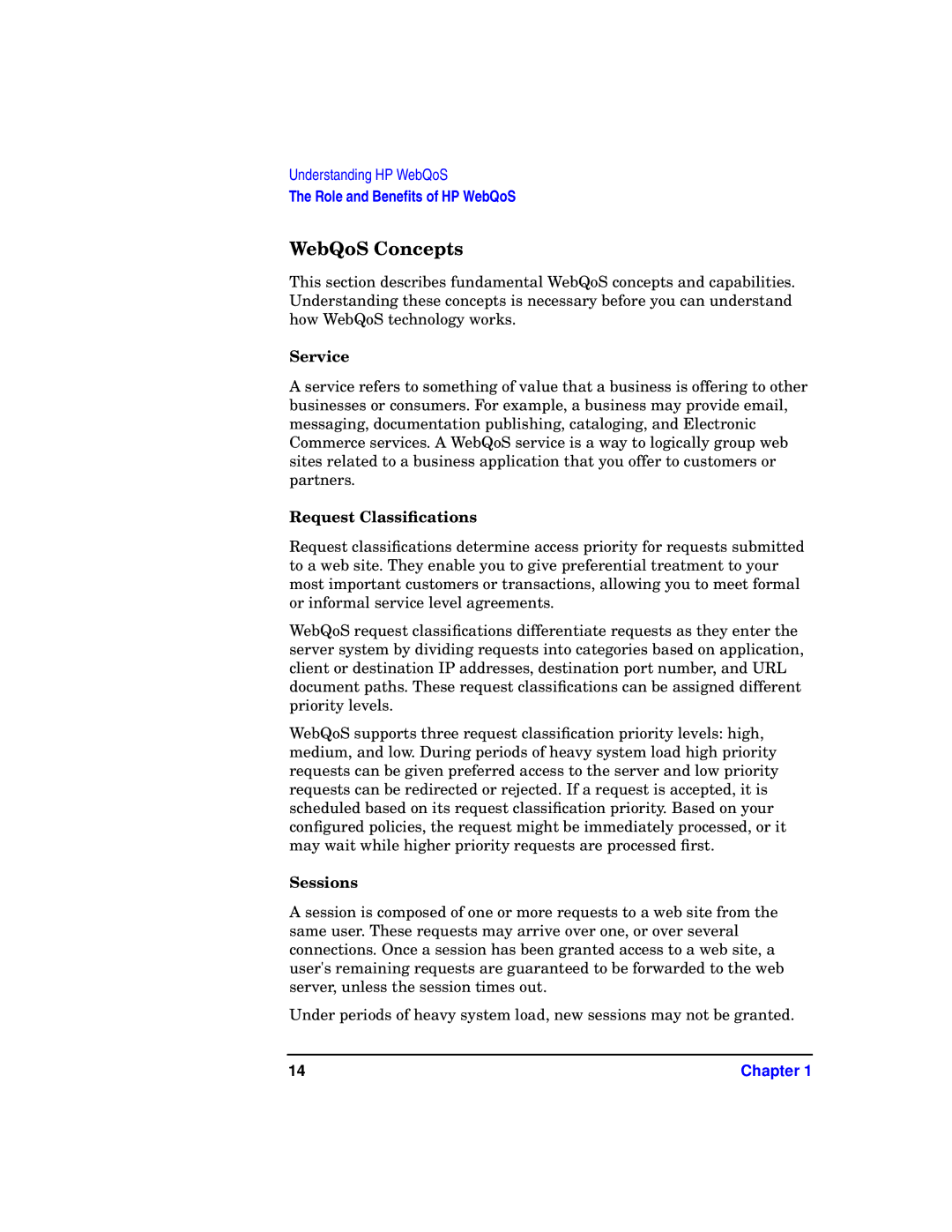Understanding HP WebQoS
The Role and Benefits of HP WebQoS
WebQoS Concepts
This section describes fundamental WebQoS concepts and capabilities. Understanding these concepts is necessary before you can understand how WebQoS technology works.
Service
A service refers to something of value that a business is offering to other businesses or consumers. For example, a business may provide email, messaging, documentation publishing, cataloging, and Electronic Commerce services. A WebQoS service is a way to logically group web sites related to a business application that you offer to customers or partners.
Request Classifications
Request classifications determine access priority for requests submitted to a web site. They enable you to give preferential treatment to your most important customers or transactions, allowing you to meet formal or informal service level agreements.
WebQoS request classifications differentiate requests as they enter the server system by dividing requests into categories based on application, client or destination IP addresses, destination port number, and URL document paths. These request classifications can be assigned different priority levels.
WebQoS supports three request classification priority levels: high, medium, and low. During periods of heavy system load high priority requests can be given preferred access to the server and low priority requests can be redirected or rejected. If a request is accepted, it is scheduled based on its request classification priority. Based on your configured policies, the request might be immediately processed, or it may wait while higher priority requests are processed first.
Sessions
A session is composed of one or more requests to a web site from the same user. These requests may arrive over one, or over several connections. Once a session has been granted access to a web site, a user's remaining requests are guaranteed to be forwarded to the web server, unless the session times out.
Under periods of heavy system load, new sessions may not be granted.
14 | Chapter 1 |
